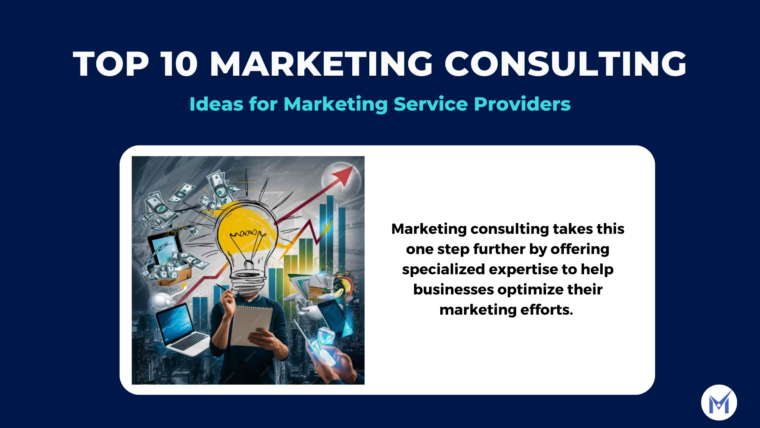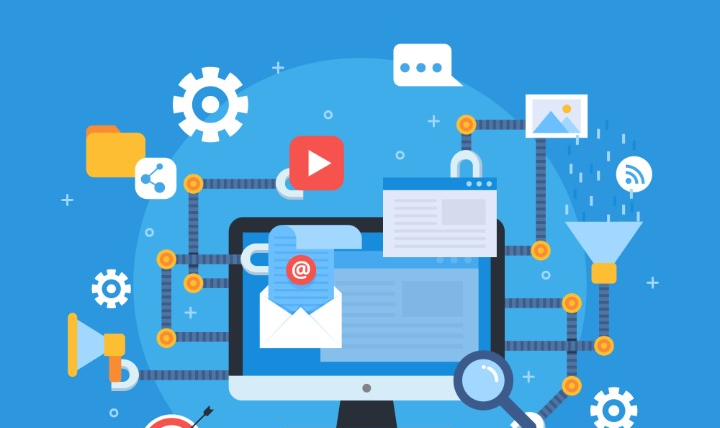Web application development services involve the creation of customized software applications that run on web browsers. These applications can be used for a variety of purposes, including e-commerce, content management, customer relationship management, and more. Some of the popular applications include Google Search, Facebook, Amazon, eBay, Slack, etc. Web application development services require specialized knowledge of programming languages such as HTML, CSS, and JavaScript, as well as frameworks and technologies like Angular, React, Node.js, and others.
What is a web application?
A web application is a computer program or software application that runs on a web server, is typically accessed through a web URL, and can be used on desktop computers, laptops, smartphones, and other web-enabled devices. Web applications are designed to provide interactive and dynamic user experiences through a web interface and can be accessed from anywhere with an internet connection. Some of the popular web application types are:
- E-commerce – E-commerce web applications allow businesses to sell products and services online, including features like product catalogs, shopping carts, payment processing, and order management.
- Content Management Systems: Content management systems (CMS) allow businesses to manage and publish digital content, such as articles, videos, and images, on their websites.
- Customer Relationship Management: Customer relationship management (CRM) web applications help businesses manage their interactions with customers and clients, including tracking sales leads, managing customer information, and automating marketing campaigns.
- Business Process Automation: Business process automation (BPA) web applications automate manual business processes, such as data entry, invoice processing, and inventory management, to improve efficiency and productivity.
- Social Media Platforms: Social media platforms are web applications that allow users to connect and communicate with others, share content, and engage in online communities.
What is a web application service?
A web application service is a type of online service where a freelance web developer or web development agency provides web application development services to clients on a project basis. Web application services may include a wide range of services such as web application planning, architecture, design, development, testing, deployment, and maintenance. Web application projects may involve varying complexity, from simple one-page web applications to complex enterprise-level applications that can run entire business operations.
Starting a web application service business
Starting a web application development service can be a great way to start a successful business. However, it’s important to take the necessary steps to ensure that your business is effective and efficient. It requires careful planning and execution to succeed.In this article, we will explore the key steps involved in starting a web application service business, including identifying your target market, defining your services, building a team, developing a web application development process, pricing your services, and developing a marketing and sales strategy. By following these steps, you can build a successful web application service business that meets the unique needs of your clients, provides ongoing value, and grows over time.
- Define your target market
- Identify skills and experience
- Differentiate, differentiate, differentiate
- Build your development
- Develop your development assets
- Develop a pricing strategy
- Develop a marketing and sales strategy
- Focus on the first sale
- Provide exceptional customer service
- Building a sustainable business
Defining your target market
Identifying and defining a web application development target market is an important step in starting a successful business. Here are some steps to help you identify and define your web application development niche:
- Target Market – research the market to identify the demand for web application development services. Look for areas where there is high demand but low competition. This could be a specific industry, such as healthcare or finance, or a particular type of web application, such as e-commerce or social media.
- Target Customer – identify your target customer and their specific needs. Determine what problems they are facing and how your web application development services can help solve them. This will help you narrow down your niche and tailor your services to meet the specific needs of your target market.
- Competition – analyze the competition and their offerings. Look for gaps in the market that you can fill with your services. Determine what sets your services apart from the competition and how you can differentiate yourself.
Identify your Skills and Experience
To develop and maintain web applications successfully, it’s crucial to have a broad range of technical skills and expertise. Possessing the necessary skills and experience enables you to provide high-quality service, gain trust from clients, stay competitive, and deliver projects within the agreed timeline and budget. When clients perceive that a web development team has the necessary skills and experience to provide excellent service, they are more likely to trust the team. This trust can lead to repeat business, positive reviews, and word-of-mouth referrals, further strengthening the team’s reputation and success.
To get started in web application development, it’s important to take an inventory of your own skills and experience. Consider which areas you excel in, such as planning, design, development, testing, or project management. Once you have a clear understanding of your strengths and weaknesses, you can evaluate your team’s capabilities to identify areas where they excel. By leveraging the strengths of your team members and collaborating effectively, you can develop a comprehensive approach to web application development that delivers high-quality results for your clients.
Differentiate, Differentiate, Differentiate
In the highly competitive world of web application development, differentiation is key to standing out from the competition and attracting clients. With so many service providers offering similar services, it’s important to differentiate your business by offering specialized services and solutions that meet the unique needs of your clients. By doing so, you can provide value and stand out from competitors who offer generic services. Differentiation can also help you build a strong brand identity and reputation, which is critical in a market where trust and credibility are essential for success. Ultimately, differentiation allows you to establish a competitive advantage, generate more leads, and achieve long-term success in the web application development industry
- Differentiate by application type: You can specialize in a specific type of web application, such as e-commerce platforms, content management systems, customer relationship management systems, social media platforms, business process automation platforms, project management tools, online education platforms, or healthcare management systems.
- Specialize in a specific platform: You can specialize in a specific platform, such as React, Angular, Java or .NET, and focus on delivering high-quality web applications using that platform.
- Differentiate by features – Web application features can vary widely depending on the purpose and intended use of the application. Some common web applications include user responsive design, navigation, registration and login, profile creation, search, security, hosting, and analytics and reporting. These features can enhance the functionality and user experience of the web application and provide additional value to clients. Other advanced features include social media integration, content management, search functionality, multimedia support, chatbots and AI-based support. By offering a wide range of web application features, you can deliver custom solutions that meet the unique needs and requirements of your clients.
- Different through value-added services: You can offer unique services by combining different types of services together. For example, you can combine maintenance and support services to your development service, providing more value to your clients and setting you apart from your competitors.
Build your development team
A website service delivery team is a group of professionals responsible for designing, developing, and delivering web applications. The team includes individuals with different roles and responsibilities, each contributing to the successful delivery of the application. Here’s a brief overview of the different roles and responsibilities of a website service delivery team:
- Project Manager: The project manager is responsible for overseeing the entire project, managing the team, and ensuring that the project is delivered on time, within budget, and meets the client’s expectations.
- Technical Architect: The technical architect is responsible for designing the technical architecture of the application, including the technology stack, infrastructure, and security measures. They ensure that the website is scalable, reliable, and secure.
- Web app Designer: The web designer is responsible for creating the visual design and layout of the application. This may include wireframe, mockups, and proto-types. They work with the client to understand their brand, aesthetic preferences, and target audience to create a design that is visually appealing and user-friendly.
- Front-End Developer: The front-end developer is responsible for turning the design into functional applications using various technologies. They ensure that the application is responsive, accessible, and meets the latest web standards.
- Back-End Developer: The back-end developer is responsible for building the server-side components of the application, including databases, server-side scripting, and APIs. They ensure the application is scalable, secure and easy to maintain.
- Database Administrator: The database administrator is responsible for the design, implementation, and maintenance of the application’s database. They ensure that the database is secure, efficient, and scalable.
- Quality Assurance (QA) Specialist: The QA specialist is responsible for testing the web app to ensure that it is free from bugs, errors, and other issues. They work with the team to identify and resolve any issues before the application is delivered to the client.
- DevOps Engineer: The DevOps engineer is responsible for the deployment, and monitoring of the application. They ensure the team can continuously develop, test, and deploy applications. They also automate processes to improve efficiency, monitor, and ensure high availability.
Building a web application development team takes time and effort. Also, not all development requires all the resources. You can offer services based on your resources available, and continue to build as you go. The key is you get started with what you have
Build your development assets
For any business you need assets. This is true for your service business as well. Delivering high-quality web development services requires a range of resources, including right methodology and process, skilled team, hardware and software, project management and collaboration tools, and continuous learning and skill development resources.
Development methodology and process can guide you and your team move through different stages of development. Identifying the suitable methodology and process for your service is essential for delivering successful web applications. The process should be comprehensive, streamlined, and efficient. Here are some things to consider when developing a web application development process:
- Define your methodology – Web application development methodologies are a set of principles and practices used to guide the development. Agile methodology is an iterative approach that emphasizes flexibility and customer satisfaction, while waterfall methodology is a sequential approach that is ideal for projects with well-defined requirements. SDLC (Software Development Life Cycle) is a more comprehensive approach that includes a set of stages, including planning, analysis, design, development, testing, and maintenance. Each methodology has its own strengths and weaknesses, identifying the suitable methodology and process that is suitable for your team is key to success.
- Determine Technology Stack: Determine the technology stack that will be used for the web application. This includes the programming language, frameworks, and libraries that will be used.
- Establish Communication Protocols: Establish communication protocols to ensure that team members can communicate effectively and collaborate efficiently. This includes regular meetings, progress reports, and feedback sessions.
- Assign Roles and Responsibilities: Assign roles and responsibilities to team members based on their skills and expertise. Make sure that each team member understands their role and responsibilities and can contribute to the project’s success.
- Develop documentation: Develop documentation that includes standards and guidelines, best practices, templates, and other relevant documents that can help your team to the successful delivery of the application.
Develop a pricing strategy
Pricing a web application development service can be challenging. It’s important to consider various factors and strategies to ensure that you are offering a fair price that is competitive and reflects the value of your services. Here are some factors to consider:
- Service Scope: The complexity of the service, the number of features, and the size of the team required to develop the web application will all influence the pricing. Larger projects with more complex features and a larger team will typically have a higher price.
- Hourly vs. Fixed Rate: You can choose to price your services either by the hour or with a fixed rate. Hourly rates may be more appropriate for smaller projects with fewer unknowns, while fixed rates may be more appropriate for larger projects with more complex requirements.
- Industry Rates: Research industry rates to ensure that your pricing is competitive. Look at other web development service providers in your target market and prices to theirs.
- Geographical Location: The cost of living in your geographical location may affect your pricing. If you live in an area with a higher cost of living, your prices may be higher to account for this.
- Value-Based Pricing: Value-based pricing involves pricing your services based on the value that they provide to the client. For example, if your web application development service can save the client time or increase their revenue, you may be able to charge a higher price.
- Extra Services: If you are offering extra services, such as maintenance and support, include those costs into the pricing. This can increase your revenue and provide additional value to the client.
- Discounts and Special Offers: Consider offering discounts and special offers to attract new clients or retain existing clients.
Marketing and Sales strategies
Marketing and sales strategies are essential to reach potential clients and grow their business. A winning strategy requires understanding your target market, identifying their needs, and developing a plan to deliver value and build relationships. Here are some topics to consider when building your strategy:
- Develop Your Brand – build a strong brand that reflects your values, mission, and unique selling proposition. Develop a brand identity that resonates with your target market and use it consistently across all marketing and sales channels.
- Build a Website develop a professional and user-friendly website that showcases your web application development service and provides detailed information about your services and value proposition.
- Content Marketing -develop high-quality content, such as blog posts, whitepapers, and case studies, that demonstrates your expertise and provides value to your target market.
- Social Media Marketing -utilize social media platforms to promote your web application development service and engage with your target market. Use targeted advertising to reach potential clients and build brand awareness.
- Email Marketing– develop an email marketing campaign to reach potential clients and nurture leads. Provide valuable content and personalized messaging to build relationships and drive conversions.
- Partner with Other Businesses -develop partnerships with other businesses in complementary industries to expand your reach and offer more comprehensive solutions to clients.
- Provide Exceptional Customer Service – provide exceptional customer service to build loyalty and generate positive word-of-mouth referrals.
Focus on the first sale
Making the first sale of a web application development service can be challenging. Here are some steps to help you make your first sale:
- Identify potential clients: Identify potential clients who are likely to benefit from your web application development service. Research their business and understand their needs and challenges.
- Develop a sales pitch: Develop a sales pitch that highlights the unique value proposition of your web application development service. Focus on how your service can solve the specific challenges of the potential client.
- Reach out to potential clients: Reach out to potential clients through various channels such as email, phone, or social media. Personalize your message and offer a free consultation to discuss their needs and how your web application development service can help them.
- Provide a detailed proposal: After the initial consultation, provide a detailed proposal that outlines the scope of the project, timelines, and pricing. Be transparent and clear about the expectations and deliverables.
- Address objections: Address any objections the potential client may have about your web application development service. Show them case studies or testimonials from satisfied clients to build trust and credibility.
- Close the deal: Once the potential client has agreed to move forward with your web application development service, finalize the contract and provide a clear timeline for the project.
- Deliver exceptional service: Deliver exceptional service throughout the project to ensure the satisfaction of the client. This will help you establish a positive reputation and generate referrals for future business.
Making the first sale of a web application development service can take time and effort, but by identifying potential clients, developing a sales pitch, providing a detailed proposal, and delivering exceptional service, you can establish your business and build a loyal client base.
Provide an exceptional customer service
Providing exceptional web application development service requires a commitment to quality, communication, and collaboration. Here are some key steps to providing exceptional web application development service:
- Understand the Client’s Needs: Take the time to understand the client’s needs, goals, and expectations for the web application. Collaborate with the client to develop a detailed project scope and timeline.
- Focus on User Experience: Prioritize user experience in the design and development of the web application. Create a design that is intuitive, user-friendly, and easy to navigate.
- Use Best Practices: Use industry best practices in web application development to ensure the security, reliability, and performance of the application.
- Maintain Communication: Maintain regular communication with the client throughout the project to provide updates on progress, address any concerns or questions, and ensure that the project is progressing according to schedule.
- Deliver on Time and on Budget: Deliver the web application on time and on budget, and ensure that it meets the client’s expectations for quality and functionality.
- Provide Ongoing Support: Provide ongoing support to the client after the web application is delivered to ensure that it continues to meet their needs and remains up-to-date with the latest technologies and trends.
- Seek Feedback: Seek feedback from the client throughout the project and after delivery to identify areas for improvement and ensure that future projects are even more successful.
By following these steps, you can provide exceptional web application development service that meets the unique needs of your clients, exceeds their expectations, and generates positive word-of-mouth referrals.
Building a sustainable business
Building a recurring web application business requires a focus on providing ongoing value to clients, staying competitive, and continuing to grow the business. Here are some steps to help you build a recurring web application business:
- Provide Ongoing Support: Provide ongoing support to clients to ensure that their web application continues to meet their needs and remains up-to-date with the latest technologies and trends. This can include maintenance, updates, and troubleshooting.
- Offer Value-Added Services: Offer value-added services that enhance the functionality and value of the web application, such as integration with third-party services, custom reporting, or advanced analytics.
- Seek Feedback: Seek feedback from clients to identify areas for improvement and ensure that future projects are even more successful. Use feedback to improve your services and strengthen relationships with clients.
- Stay Competitive: Stay up-to-date with the latest technologies and trends in web application development and continuously improve your services to stay competitive in the market.
- Expand Your Services: Expand your services to offer a wider range of web application development solutions and meet the changing needs of your clients.
- Develop Partnerships: Develop partnerships with other businesses in complementary industries to expand your reach and offer more comprehensive solutions to clients.
- Develop a Marketing Strategy: Develop a marketing strategy that promotes your web application development services and builds your brand. Use targeted advertising, social media, and content marketing to reach potential clients and build awareness.
By following these steps, you can build a recurring web application business that provides ongoing value to clients, stays competitive, and continues to grow over time.
Conclusion
Building a recurring business by productizing your services involves packaging your web application development services into specific products that can be sold repeatedly to different clients.
Minutly offers your necessary tools to build, market, sell and service your customers. By creating specific products and promoting them on Minutly, you can build a recurring business by selling the same products repeatedly to different clients. Minutly also provides tools for managing communication, payments, and feedback, making it easier to provide exceptional customer service and build strong relationships with clients. Click here to get started with your web development service.









How to launch your web application development service
Website with a purpose: How to drive quality website traffic?
How to start a Generative AI Service: A Comprehensive Guide (2024)
How to launch your web design service – A comprehensive guide to success
What is a Service Catalog?
Top 10 Essential Sales Service Requests Every Business Should Offer
Sharing your Minutly Catalog
Setting up your catalog